Training a new puppy is an exciting and rewarding experience. However, it can also be challenging, especially if you are the only one doing it. Many people wonder if more than one person can train a puppy. The answer is yes! Having multiple trainers can benefit both the puppy and the humans involved.
Firstly, having multiple trainers can help you socialize your puppy better. Socialization is crucial in helping your puppy develop into a well-behaved dog. When you have numerous trainers, your puppy will get used to being around different people, making them more comfortable in various situations.
Secondly, having more than one trainer may help ensure consistency in training. Consistency is essential when training a puppy because it helps them understand what is expected. When multiple trainers are involved, everyone must be on the same page about what commands to use and how to reward good behavior.
Thirdly, more trainers mean more opportunities for positive reinforcement. Positive reinforcement is essential when training puppies because it encourages good behavior without using punishment or force. When more trainers are involved, there are also more chances to reward good behavior with treats or praise.
Fourthly, having multiple trainers can prevent burnout and exhaustion in one person. Training a puppy requires patience and energy that not everyone has all the time. By sharing the responsibility of training with other people, no one person will feel overwhelmed or exhausted from having to do all the work alone.
Fifthly, different trainers can bring different perspectives and techniques to the training process. Every person has a unique way of communicating with animals; therefore, having several members train your pup allows him/her to learn varied forms of communication that may come in handy in future situations.
Lastly, having more than one trainer creates a safer environment for the puppy and the trainers as they share responsibilities like watching over him/her while playing outside.
Table of Contents
The Importance of Consistency in Puppy Training

Consistent rules and boundaries are critical in puppy training. Puppies thrive on routine and structure, so having consistent expectations will help them understand what is expected of them. When you bring a new puppy home, it’s necessary to establish uniform rules and boundaries right from the start.
Potty training should be a top priority for all new puppies. Consistency is key, and stick to that routine every day. This means taking your pup out regularly throughout the day and after meals or playtime.
Leash training is also vital to ensure obedience and control over your pet. Start by introducing your puppy to its leash in a calm environment, such as inside the house or in the backyard. Once they are comfortable with the leash, begin practicing walking on the leash in short sessions around your neighborhood.
Using the same cues and commands will help shape your pup’s behavior. Whether you’re teaching basic obedience commands like “sit” and “stay” or other tricks like “rollover” or “play dead,” being consistent with them is a must. Use the same verbal cues every time you give a command, and always reward good behavior with praise or treats.
Trust and respect are earned through consistent reinforcement of rules and boundaries. This means enforcing consequences when necessary (such as redirecting unwanted behavior) but also rewarding good behavior with plenty of love, attention, and treats.
Puppies look up to their owners for guidance and direction, so continually reinforcing rules and boundaries is paramount to earning their trust and respect.
How to Create Consistency When Multiple People Are Training a Puppy
Taking Turns to Train the Puppy
One of the biggest challenges in training a puppy with multiple trainers is ensuring that everyone involved stays consistent. One way to achieve this is by taking turns working with the puppy. This helps distribute the workload and ensures that each trainer has an equal opportunity to work with the puppy. It also allows for consistent training, as each trainer can follow the same routine and reinforce previously learned behaviors.
When taking turns, it’s essential for all trainers to communicate and coordinate their efforts. They should discuss what commands and behaviors they are focusing on so everyone is on the same page. This will help avoid confusion for the puppy and prevent any conflicting training methods or approaches.
Teaching Different Skills
Each person can focus on teaching different skills to the puppy, allowing it to learn a variety of commands and behaviors. For example, one trainer can focus on basic obedience commands like “sit” and “stay.” At the same time, another can work on crate training or leash walking.
This approach provides variety in training and helps ensure that all necessary skills are covered. All trainers need to be consistent in their process when teaching these skills. Using different methods or cues for the same command can confuse the puppy and make training far less effective.
Positive Reinforcement
Providing treats as positive reinforcement can encourage good behavior and make training more enjoyable for the puppy. However, make sure to coordinate treat-giving between all trainers to avoid overfeeding or confusing the puppy.
Trainers should agree on what treats are appropriate for rewarding good behavior, how many treats should be given per session, and when treats should be given during a session. Consistency in treat-giving will help reinforce good behavior consistently across all trainers.
Involving Children in Training
Involving children in training can teach them responsibility and help them bond with the puppy. However, it’s suggested that there be adult supervision during these sessions since children may not have enough experience in handling puppies.
It’s important to teach children how to interact with the puppy safely and gently and to supervise their interactions closely. Children can be assigned simple tasks like holding the leash or giving treats. This helps them feel involved and reinforces good behavior in the puppy.
Consistent Care and Attention
Consistent care and attention from multiple trainers can help establish a solid leader-follower relationship with the puppy. This is important for building trust between the puppy and its trainers and setting boundaries and expectations.
Trainers should agree on a consistent feeding schedule, exercise routine, and sleep schedule for the puppy. This will help create a sense of structure for the puppy, which is essential for its overall well-being.
Tips for Effective Dog Training as a Family
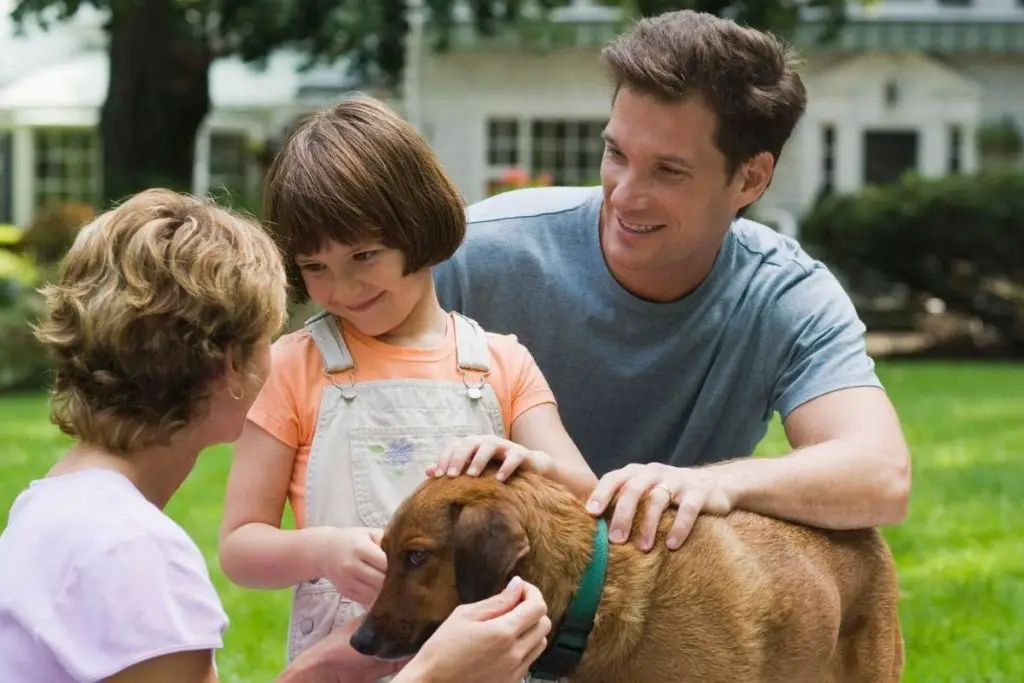
Consistency in Puppy Training
Consistency is the key. All people involved in the puppy’s training should make sure to use the same commands and techniques.
Training Sessions
Training sessions should be consistent as well. Each session should not exceed 20-30 minutes, as puppies have a short attention span. Consistent training from multiple people can strengthen the bond between the puppy and its human family.
Daily Routine
Puppies thrive on routine and structure, which can be achieved through consistent training. Consistency also applies to the puppy’s daily routine, such as feeding and potty breaks. Ensure that everyone in your household knows the schedule so there are no surprises.
Kids’ Role in Training
Children can play an active role in training your dog. However, it is essential to supervise them during these sessions to ensure that they do not harm or scare the puppy inadvertently. Kids can help train your dog by giving simple commands like “sit,” “stay,” or “come.” They can also participate in activities like playing fetch or tug-of-war with their furry friend.
Discipline for Strong-Willed Dogs
Disciplining a strong-willed dog requires patience and consistency. Positive reinforcement or redirection is always better than punishment when disciplining dogs. Rewarding good behavior encourages your dog to repeat it, while punishing lousy behavior may only make them fearful of you.
Importance of Training
Training is crucial for dogs as it sets boundaries, teaches discipline, and helps them become well-behaved pets that are easy to handle around other people and animals. If you don’t train your dog, it may develop behavioral issues such as aggression towards other animals or humans.
Establishing Clear Communication Channels Among Family Members
Consistency in Training Methods and Commands
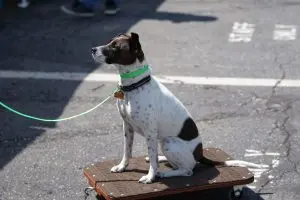
Consistency helps the puppy learn faster and avoid confusion. If one person uses a different command or process, the puppy may become confused and not know how to respond.
All trainers need to communicate with each other about their methods and commands. This way, everyone can stay on the same page and avoid confusion for the puppy. For example, if one person uses “sit” with a downward hand motion while another uses “down” with that same motion, this can be confusing for the puppy. By communicating with each other, trainers can ensure that they are using consistent language and signals throughout training sessions.
Different Perspectives Benefit Learning
Different trainers bring different perspectives and experiences to the table, which can help improve the learning process for the puppy. For example, one trainer may have experience with obedience training, while another may have expertise with agility training.
Having multiple trainers also helps ensure that the puppy learns to respond to different people’s commands and cues. This is important because puppies will encounter many other people throughout their lives, including family members, visitors, and strangers. By learning to respond to different voices and cues during training sessions, puppies are better prepared for real-life situations.
Communication Among Family Members
Establishing clear communication channels among family members is crucial when training a puppy. Everyone who will be involved in training should be on board with using consistent methods and commands. It’s also important for everyone to communicate with each other about what they’re doing during training sessions.
For example, suppose one family member notices the puppy isn’t responding well to a particular command or method. In that case, they should share this information with others so that adjustments can be made as needed. Additionally, family members should support each other during training sessions and avoid contradicting each other in front of the puppy.
Setting and Enforcing Consistent Rules and Boundaries for Your Puppy
Training a puppy is a team effort that requires the involvement of everyone in the household. It is vital for all people who interact with the puppy to be consistent in their training methods and commands. This consistency helps the puppy learn faster and understand what is expected of them.

Different people can teach the puppy different skills, such as obedience, socialization, and house training. Each person should have designated responsibilities one person can be responsible for teaching the puppy how to walk on a leash, while another person can be responsible for potty training. This division of labor ensures that each aspect of training is given enough attention.
Training a puppy together can strengthen the bond between family members and the puppy. When everyone works together towards a common goal, it creates a sense of unity within the household. Additionally, puppies thrive on routine and structure, so having multiple people involved in their training provides them with consistency and stability.
Communicating effectively with each other and working as a team is critical to ensure the puppy’s success in training. Everyone should be on board with what commands are used and how they are executed. It’s also essential to have patience during this process; puppies take time to learn new behaviors and may make mistakes along the way.
Creating a Shared Puppy Training Schedule and Routine
Establish Clear Training Goals and Methods that All Trainers Agree On
When multiple people are involved in training a puppy, it’s crucial to establish clear goals and methods that everyone agrees on. Before you start training, sit down with all trainers and discuss what you hope to achieve through your efforts.
This could include teaching basic obedience commands, crate training, or socialization skills. This will ensure consistency in the training process, which is vital for the puppy’s success.
Once you’ve established your goals, decide on the specific methods to achieve them. It’s beneficial that all trainers agree on these methods so there’s no confusion or conflicting information given to the puppy. For example, if one trainer uses a clicker for positive reinforcement and another uses treats, this could confuse the puppy and hinder their progress.
Use Consistent Commands and Cues to Avoid Confusion for the Puppy
If one trainer says “sit” while another says “down,” this could confuse the puppy and slow their progress.
Using consistent commands will help reinforce good behavior in the puppy and make it easier for them to learn new skills. All trainers should agree on commands and cues before starting training sessions to avoid confusion. These should be simple words or phrases that are easy for both humans and puppies to understand.
Keep a Shared Training Log to Track Progress and Ensure Everyone Is on The Same Page
Keeping track of a puppy’s progress is essential when multiple people are involved in their training. A shared training log can help keep everyone on the same page by documenting what has been taught so far, how well the puppy has learned each skill, and what still needs work.
The log should include details such as which commands were used during each training session, how long the session lasted, and any notes on the puppy’s behavior. This will help all trainers stay informed about the puppy’s progress and make picking up where another trainer left off more manageable.
Communicate Regularly with Each Other About The Puppy’s Behavior and Training to Maintain Consistency
Regular communication between trainers is crucial when multiple people are involved in a puppy’s training. This ensures that everyone knows the puppy’s progress and any issues that may arise. It also helps maintain consistency in training methods and reinforces good behavior in the puppy.
Trainers should communicate regularly through phone calls, text messages, or a shared calendar to discuss the puppy’s behavior and training. Suppose one trainer notices a problem during a session. In that case, they should bring it up with the other trainers so everyone can work together to address it.
Taking Turns Working with the Puppy and Providing Positive Reinforcement
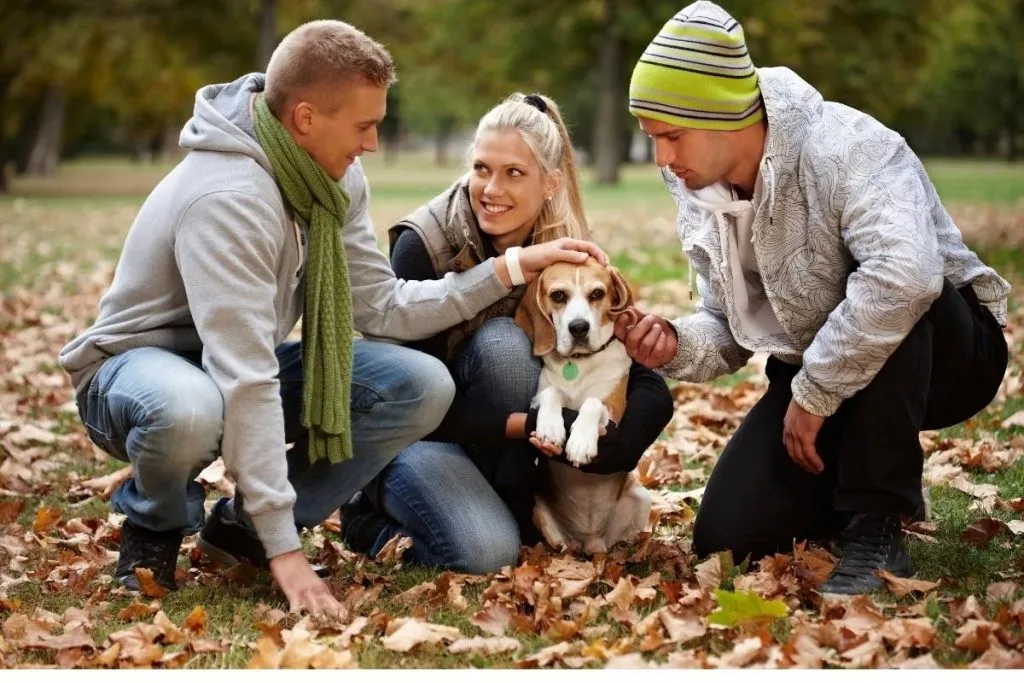
Assigning Specific Tasks
Assigning specific tasks to each family member during training sessions is highly recommended to ensure everyone actively participates. This can include one person working on obedience commands while another works on leash training. By dividing up the tasks, each person can focus on their strengths and work together as a team to train the puppy effectively.
Using Positive Reinforcement Techniques
Positive reinforcement techniques are an effective way to encourage good behavior from your puppy during training. This includes using treats, praise, and attention as rewards for desired behavior. It is essential to use these techniques consistently throughout the training process to reinforce positive behaviors.
Keeping Training Sessions Short and Frequent
Training sessions are best kept short and frequent to prevent your puppy from becoming overwhelmed or bored. Aim for 10-15 minute sessions several times a day rather than longer sessions once or twice daily. This will allow your puppy to stay focused and engaged during each session.
Involving Kids in Training
Children can also be involved in the training process by assigning them age-appropriate tasks such as rewarding good behavior with treats or playing with the puppy after a successful session. However, it is recommended that children are supervised during interactions with the dog to ensure safety for both parties.
Regularly Evaluating and Adjusting the Training Approach
It is important to regularly evaluate and adjust your training approach as needed based on the progress made by your puppy. If specific methods are not working, try new techniques until you find what works best for your dog’s learning style.
By working together as a team, providing positive reinforcement techniques, keeping sessions short yet frequent, involving children in appropriate ways, establishing clear communication and consistency, and regularly evaluating and adjusting the training approach, you can effectively train your puppy to become a well-behaved and obedient member of your family.
The Benefits of Having Multiple Trainers for Your Puppy
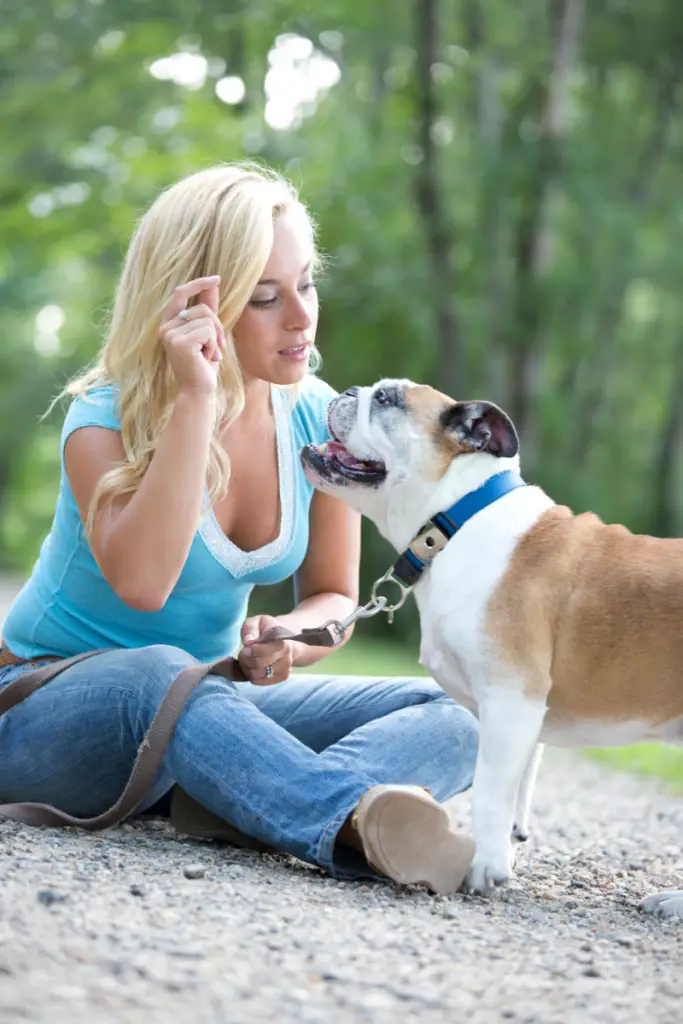
Establish a clear communication channel among family members to avoid confusion and inconsistency in training methods.
One of the most significant benefits of having multiple trainers for your puppy is establishing a clear communication channel among family members. When everyone is on the same page, it makes it easier for the puppy to understand what is expected of them and what they need to do to please their owners. This helps avoid confusion and inconsistency in training methods, which can harm the puppy’s learning process.
To ensure a clear communication channel, it’s crucial to establish a set of rules and guidelines that everyone agrees upon. This could include using consistent commands, rewarding good behavior, and avoiding punishment or negative reinforcement. Having everyone on board with these rules ensures no mixed messages are sent to the puppy.
Encourage other family members to participate in training sessions to establish a connection and leadership with the puppy.
Another benefit of having multiple trainers for your puppy is encouraging other family members to participate in training sessions. This helps establish a connection between the puppy and each household member and allows each person to take on a leadership role in the training process.
Every household member participating in training sessions promotes consistency in expectations. It reinforces good behavior across all interactions with the pup. Additionally, involving others in this process can help alleviate some stress from one individual who may feel overwhelmed by taking on all responsibility for raising their new furry friend.
Ensure that every family member has a voice in the training process.
Every family member must have a voice when it comes to training your new pup. This promotes an environment where everyone feels heard and valued while working towards common goals together – creating an effective team dynamic within your household!
By ensuring everyone has input during discussions about how best to train their new pet – whether through positive reinforcement or another method – you’re encouraging collaboration amongst all members, which makes the training process more efficient and effective.
Have everyone in the household on board with the training plan to ensure consistency and effectiveness.
Having everyone in your household on board with the puppy’s training plan is crucial for its success. By working together as a team, you can ensure that there is consistency in how your pup is trained and what they are learning. This will make it easier for them to understand what is expected of them and how they should behave in different situations.
To achieve this level of consistency, it’s essential to have regular meetings where everyone can discuss their progress and identify areas of improvement. Doing so will allow you to address concerns or issues early on before they become major problems that could impact your pup’s overall development.
Request that visitors follow the established training plan to maintain the association and relationship built with the puppy.
It’s not just family members who can benefit from being involved in your pup’s training – visitors can also play a role! However, you want anyone who interacts with your puppy to follow the established training plan. This ensures no confusion or mixed messages are sent to your pup when interacting with new people.
When visitors see how well-trained your pup is, it reinforces positive behavior both inside and outside of your home. It also helps build stronger relationships between people and pets by establishing trust through consistent expectations of behavior.
Can a Puppy Learn Well from More Than One Person Training Them?
Establish a Shared Calendar to Keep Track of Puppy Training Sessions and Responsibilities
I recommend establishing a shared calendar to ensure consistent training your puppy receives from multiple people. This calendar should include all of the scheduled training sessions and who is responsible for leading each session. By keeping track of these details in one place, everyone involved in the puppy’s training can stay on the same page.
It’s also essential to use this calendar to schedule regular check-ins with each other. These check-ins can be used to discuss any challenges or successes that have occurred during training sessions and make any necessary adjustments to the training plan.
Discuss and Agree on Training Techniques and Commands
Before starting any formal training, take some time to discuss which methods have worked best for each person in the past. Then, develop a list of commands you will use consistently throughout the training process. Everyone involved in the process must agree on the same techniques and commands.
It’s also important to keep an open mind about new techniques or commands that may arise during your puppy’s training. Attend puppy kindergarten classes together and share articles or videos about puppy training with each other. By staying informed about new methods or approaches, you can continue refining your own techniques while ensuring consistency across all trainers.
Rotate Who Leads Training Sessions
While consistency is important in puppy training, it’s equally important not to let your pup become too reliant on one person. To prevent this from happening, rotate who leads each training session. This will help ensure that your dog responds well to different people giving them commands and reduces their reliance on just one trainer.
Sticking to a Consistent Routine
Puppies thrive on routine, so sticking to a consistent schedule will help them learn faster and avoid confusion. This includes setting specific meal times, playtime, potty breaks, and training sessions. By following a consistent routine, your puppy will quickly learn what is expected of them and when.
FAQ
Q: Is it possible for more than one person to train a puppy effectively?
A: Absolutely! Different trainers bring different perspectives and techniques, which can help your puppy learn faster and better. In fact, having multiple people training your puppy can be beneficial in many ways.
Q: How do I ensure consistency when multiple people train my puppy?
A: Establishing clear communication channels among family members is the best way to ensure consistency. This means discussing and agreeing on the rules and boundaries you want your puppy to follow and creating a shared training schedule and routine that everyone can stick to.
Q: What are some tips for effective dog training as a family?
A: Effective dog training as a family requires teamwork, patience, and consistency. Here are some tips that can help:
- Establish clear communication channels among family members
- Set consistent rules and boundaries for your puppy
- Create a shared training schedule and routine
- Take turns working with the puppy and providing positive reinforcement
- Use positive reinforcement techniques such as treats, praise, and toys
- Be patient with your puppy’s progress

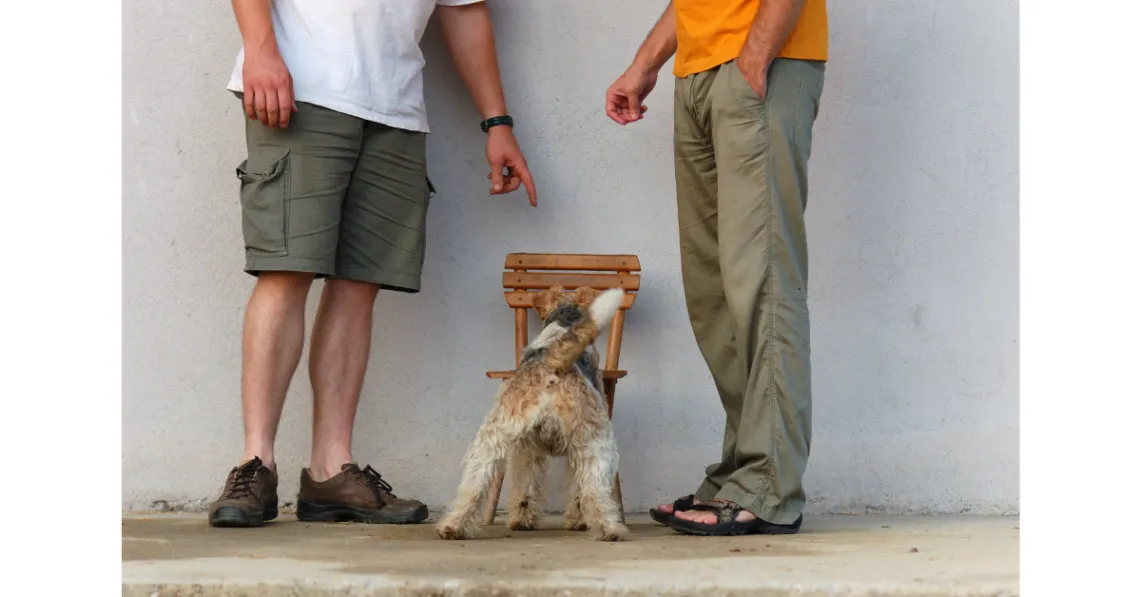

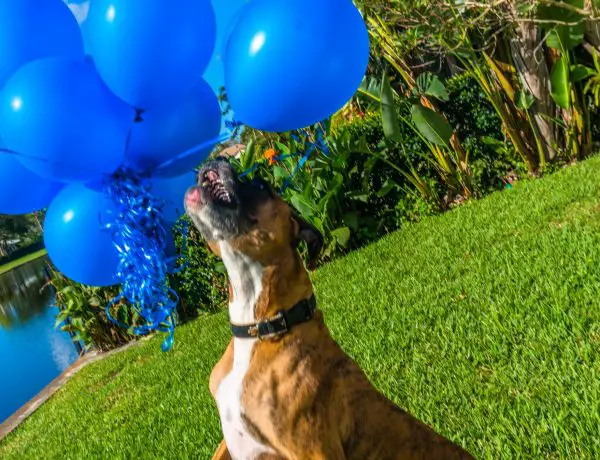

No Comments